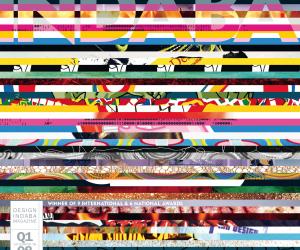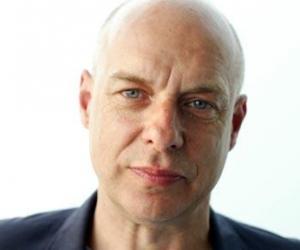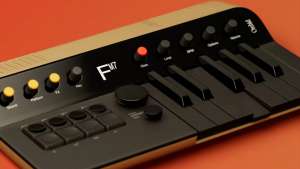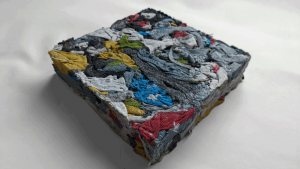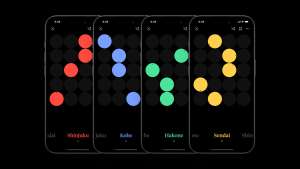First Published in
"Brian Eno once famously remarked that the problem with computers is that there isn't enough Africa in them. I kind of think that it's the opposite: they're bringing the ideals of Africa. After all, computers are about connectivity, shareware, a sense of global discussion about topics and issues, the relentless density of info overload, and above all the willingness to engage and discuss it all - that's something you could find on any street corner in Africa," wrote Paul D Miller in his introduction to Ghost World: A Story in Sound, performed at the 2007 Venice Biennial.
The New York-based hip-hop musician and intellectual is probably best known by his stage name - DJ Spooky that Subliminal Kid - drawn from a character in William S Burroughs's novel Nova Express. Miller has been heralded as the formative progenitor of the DJ-as-artist concept based on a lengthy discography of solo, collaborative and remix albums, film scores, multimedia projects and exhibitions.
Primarily, he uses digitally created music and multi-media to create a form of post-modern sculpture in the tradition of composers such as John Cage and Afrika Bambaataa. He has collaborated with pre-eminent musicians and composers ranging from Iannis Xenakis, Ryuichi Sakamoto, Butch Morris, Lee Perry, Saul Williams, Kool Keith aka Doctor Octagon and Killa Priest of Wu-Tang Clan to Yoko Ono, Metallica, Public Enemy and Thurston Moore from Sonic Youth.
Most recently, Miller released Creation Rebel (2007), which is a follow-up remix of the previous year's critically acclaimed double disk archive of Jamaican music from Trojan Records - In Fine Style: DJ Spooky presents 50 000 Volts of Trojan Records. Linking contemporary music production with traditional techniques forged by musicians such as King Tubby and U-Roy, the album has been lauded for possibly showing that hip-hop was originally born in Jamaica, not New York.
In Design Indaba magazine's own fine style of remix and collage, we invited Cape Town artist James Webb to pose a few questions to Miller, in anticipation of Miller's participation at Design Indaba 2008.
James Webb: Are there any sounds (or sonic images, rather) that you associate specifically with South Africa?
Paul D Miller: When I think of South Africa a flurry of images comes to mind: mountains, plains, cities and weird films like The Gods Must Be Crazy and Amandla! Then I remember some of the protests I attended when I was a kid in Washington DC during the "ancient" mid and late 1980s and early 1990s. The sound would be cries for companies and schools to divest from companies that did business with South Africa. I guess it would be a collage, like everything I do.
In what way do you think music can be used effectively for social change?
Music is a mirror we hold up to society. It shows what is happening in whatever culture it exists in. If I was in Tibet a century ago, I'd be making mantras, and if I was in Australia, I'd be thinking about desert songs. But I come from NY, which has so many different rhythms and mirrors that it almost doesn't exist as a city - it's more of a stage setting or something. Music changes as society changes, but in so many cases it anticipates and tracks societal change. I can't really say which causes which, but it seems that the sound of humanity is always about striving and ceaseless transformation.
Culturally speaking there is a lot of talk in international media about "Africa", as if it were a single homogenous place and not a richly diverse continent of countries and cultures. Do you have any thoughts on this, the darkly romantic image of Africa?
Yeah, it's a big problem. Most Americans, Europeans, Asians... you name it, wouldn't be able to tell the difference between say, kuduro from Angola, hip-hop from Morocco, anti-corruption beat from Cameroon or even kwaito from South Africa. Just the teeming amount of creativity on the continent alone would make for an amazing array of possibility. But on one hand or another, people always tend to reduce things to cliché. For the 2007 Venice Biennial I performed a survey mix, Ghost World: A Story in Sound (which is available on my website), of hip-hop and electronic music from all over the continent, spanning material from sources as diverse as Abdullah Ibrahim from South Africa to Oum Kulthum of Egypt. I like collage because it lets you explore density. If there is one thing Africa has so much of, it's creativity. That's something that the international community desperately needs to understand - ideas are a human resource that Africa has an absolute abundance of.
Your ideas are realised through many media, including turntablism, writing and installation. Could you tell us more about your New York Is Now installation at the Africa Pavilion of the 2007 Venice Biennial?
The project I did for the Venice Biennial was a mixture of situations: I went to Angola and participated in the Luanda Triennial (the first international art exhibit they've had since the formal end of conflict). And I had such a great experience that I went back and created the template for New York Is Now. It kind of reverse-engineers some of the issues that started Surrealism - mainly how Europe appropriated many of the themes of what was going on in Africa, Asia and Latin America. I wanted to create a portrait of New York as a series of fictions and video poems, but crafted with Africa in mind. The name refers to Ornette Coleman's album from 1968, a year of intense upheaval worldwide.
What are you currently busy with, and are there any projects you can tell us about that are still in the dreaming/planning stage?
I'm writing to you at 6am from Buenos Aries, Argentina. I head to Antarctica from here, by way of one of the world's most southern cities, Ouisha. I'm shooting a film for the next couple of weeks in different locations in Antarctica about the sound of ice. Ice has always had a strange reference point in black American culture. So many people name themselves after it - Iceberg Slim, Soul on Ice, Ice-T, Ice-Cube... I just wanted to see what the ice itself has to say about it all.
If you made a mix of your most pivotal influences (music and otherwise), what would be on it?
I'd say first and foremost that I'm an artist who uses sound. The rest is about looking at the world and realising that it's just a huge archive. Every rock has a story, every piece of water, of sand... whatever. It's all connected. So it's a bit hard to pull back and say that there's only one influence. I guess the world is my record collection.
Any thoughts or hopes as to where music and art might go next?
It'll all be digital biotech one day.
If you could name the age we are currently in, what would it be?
The age of post-rational. Forget the "Enlightenment," that's old news. The rest is all about human beings being able to see that we're just one part of the puzzle, one piece of something that's much bigger than us, but that we participate in.
"The sheer absurdity of the Noonday gun, a political symbol of British colonialism, being fired every day since the late 1700s from Signal Hill", is artist James Webb's favourite piece of design in Cape Town.





